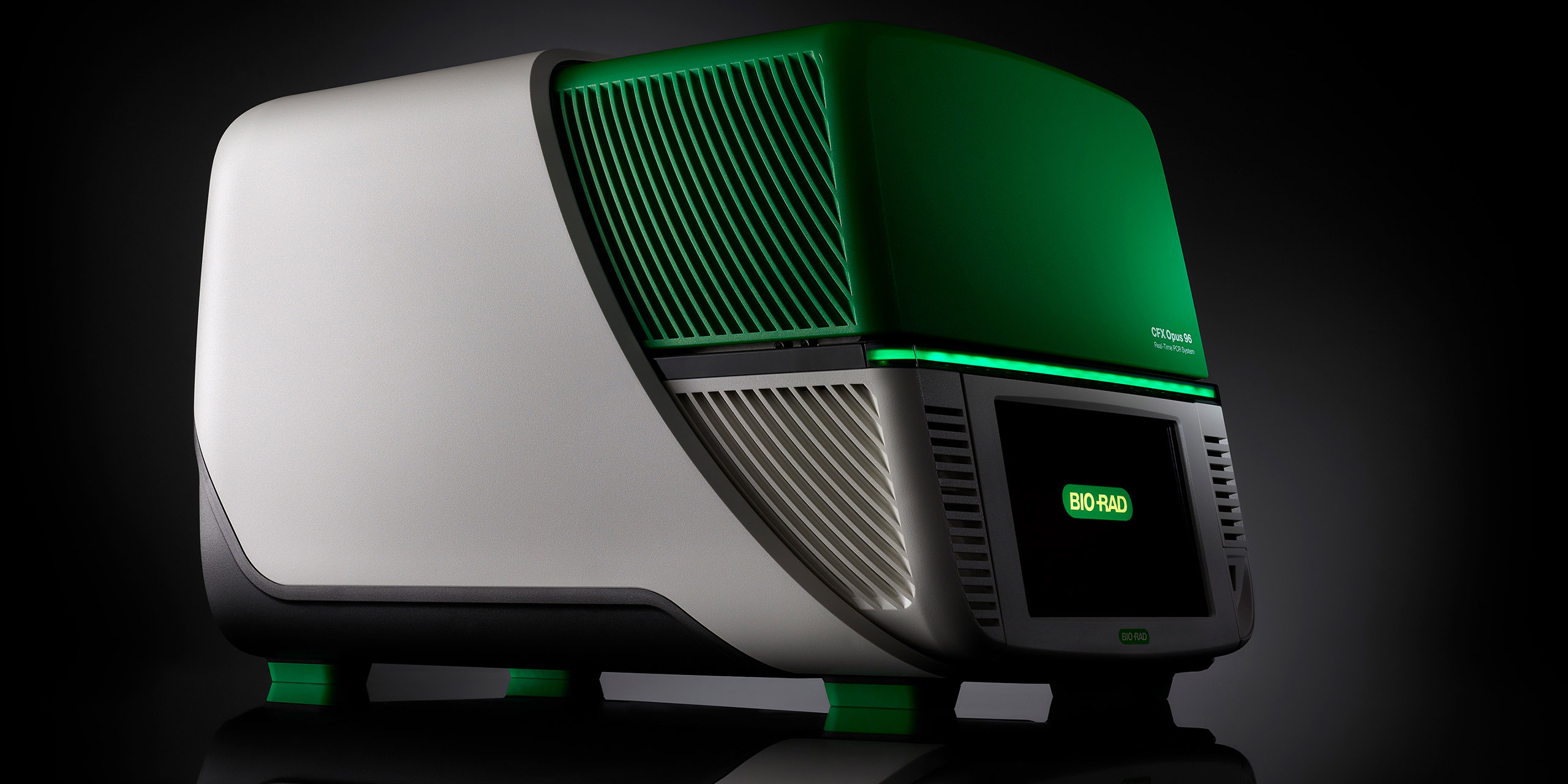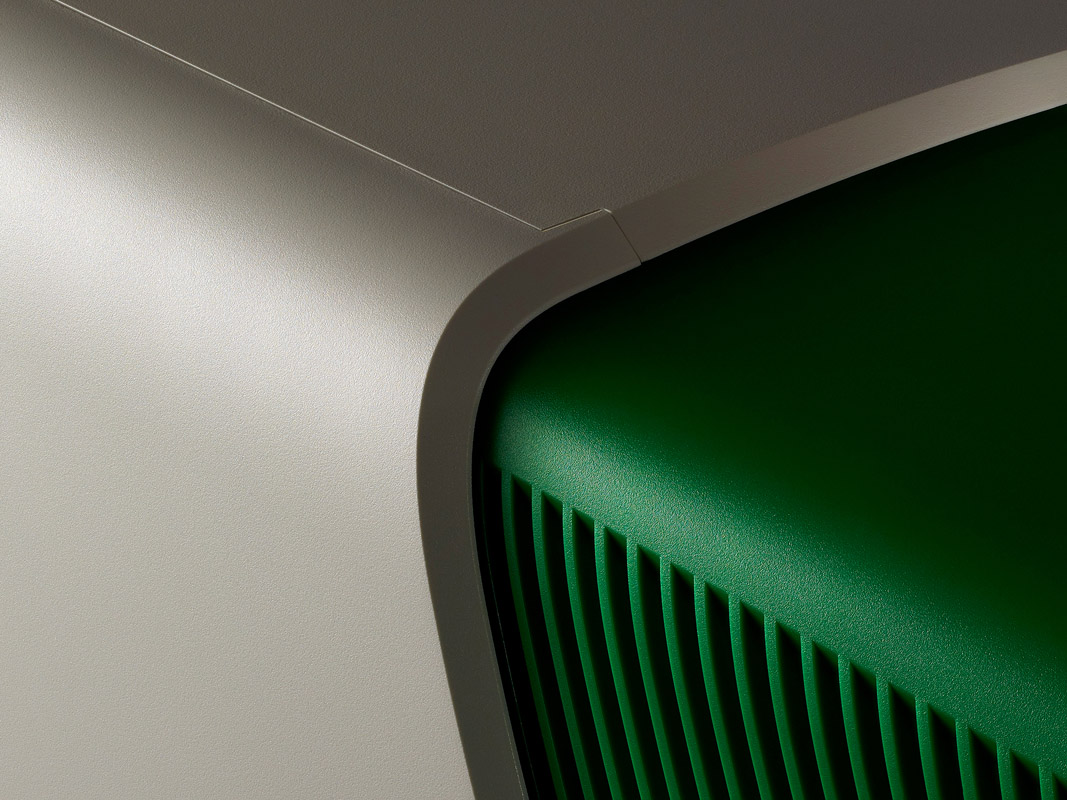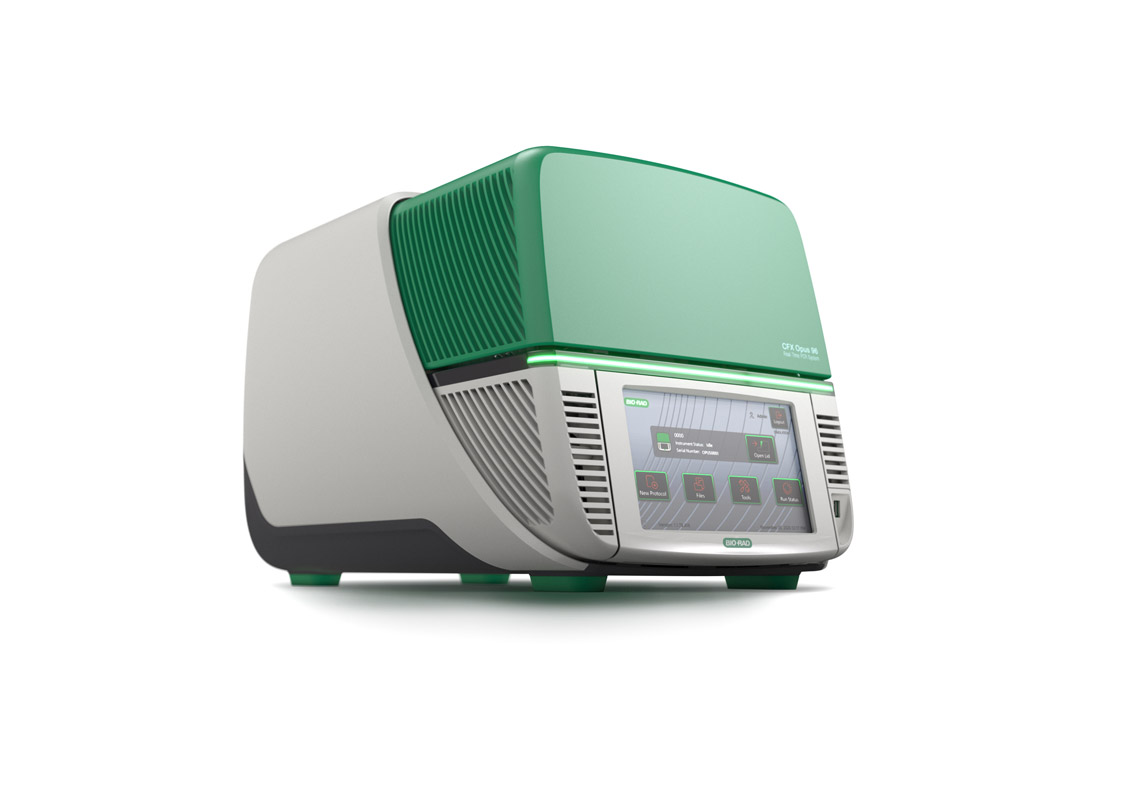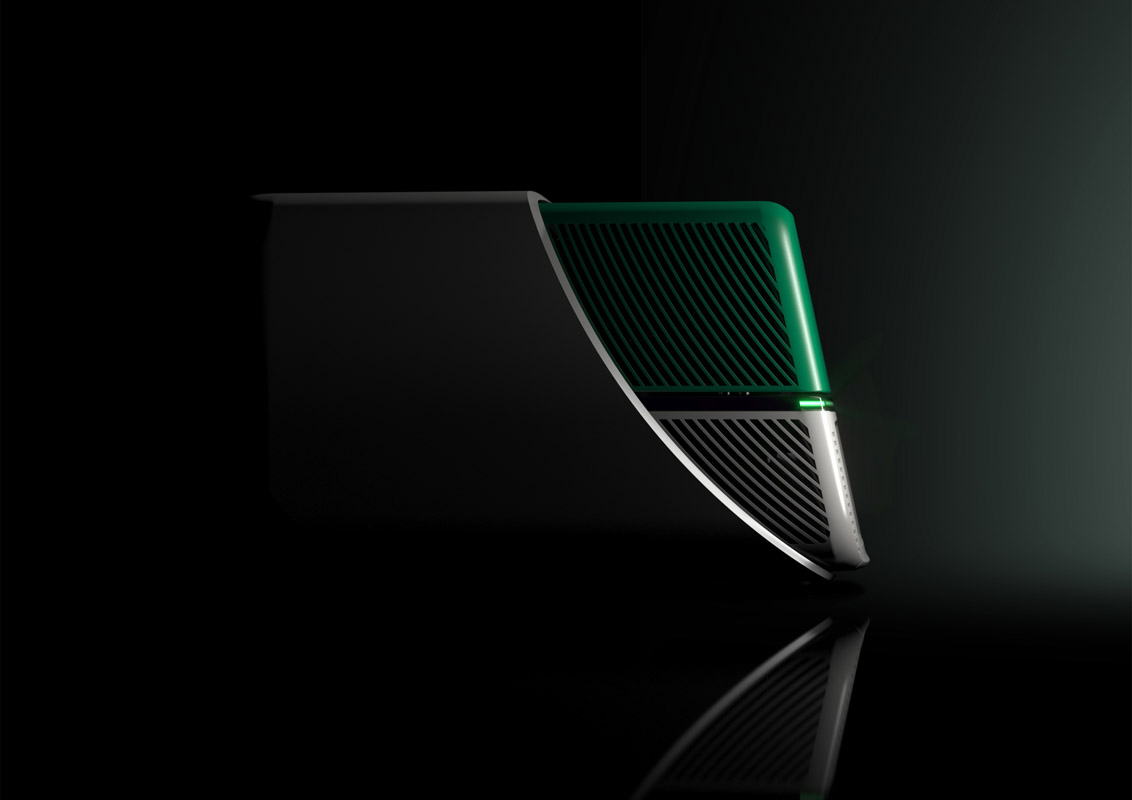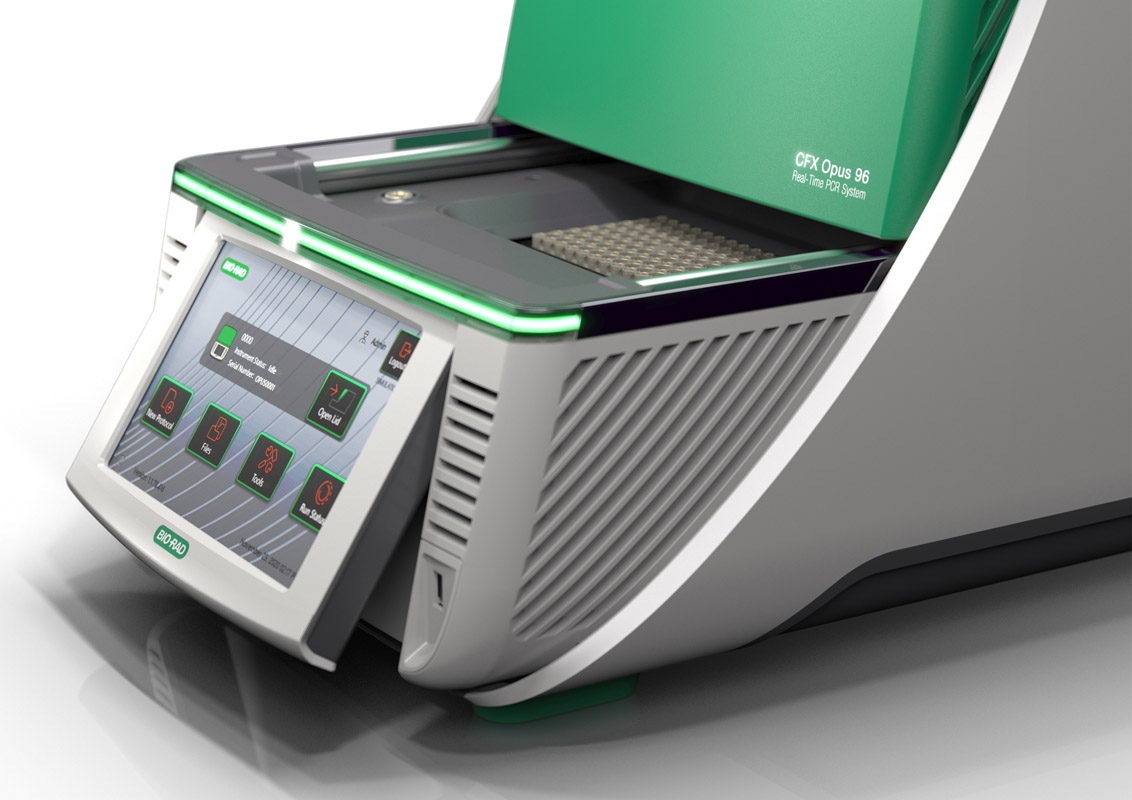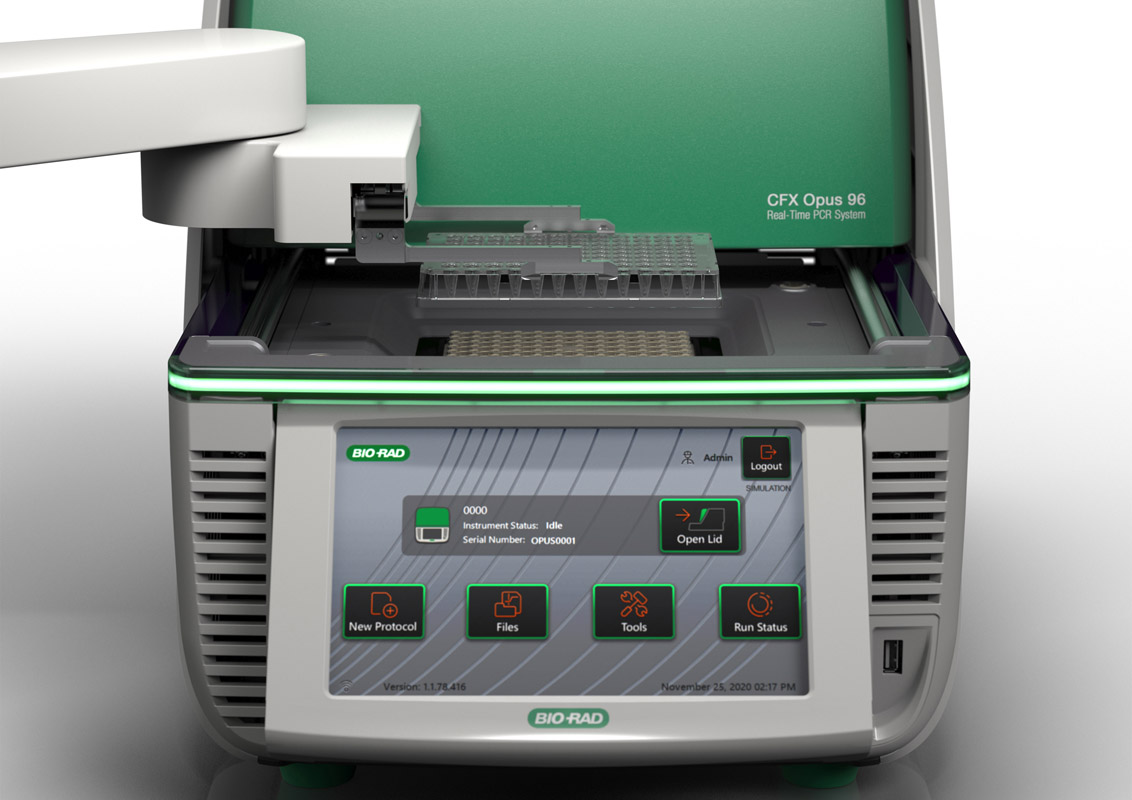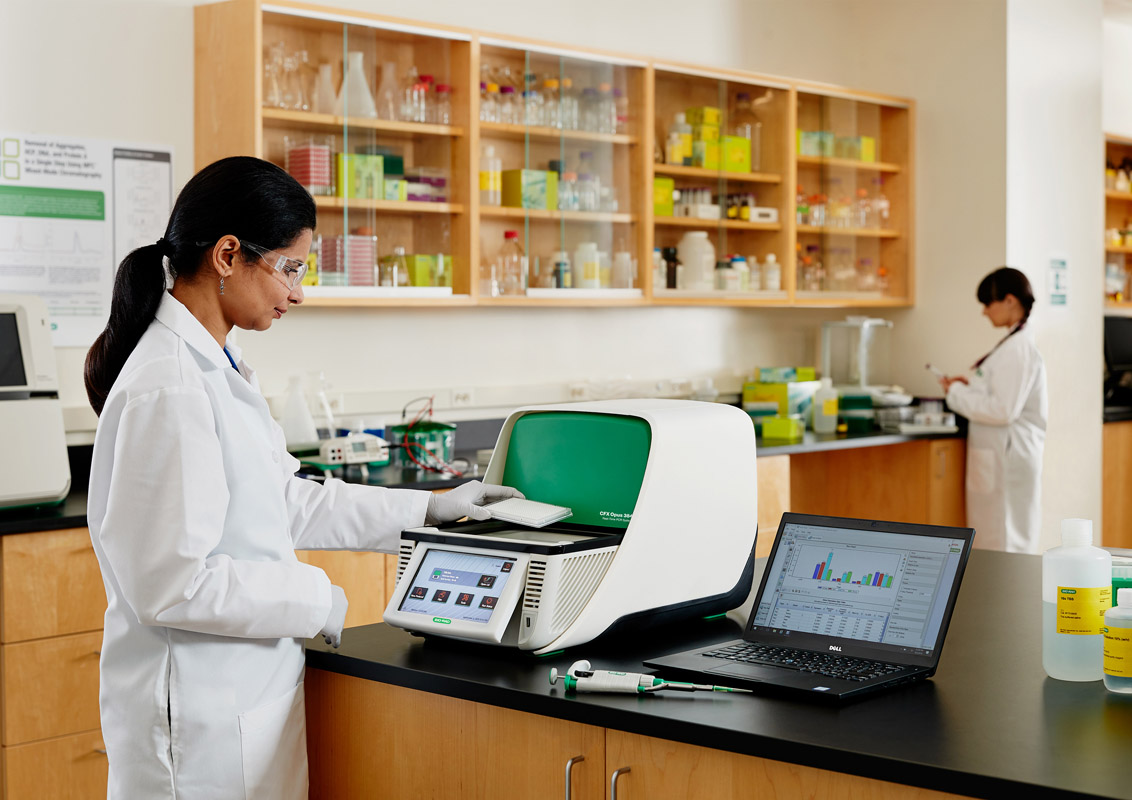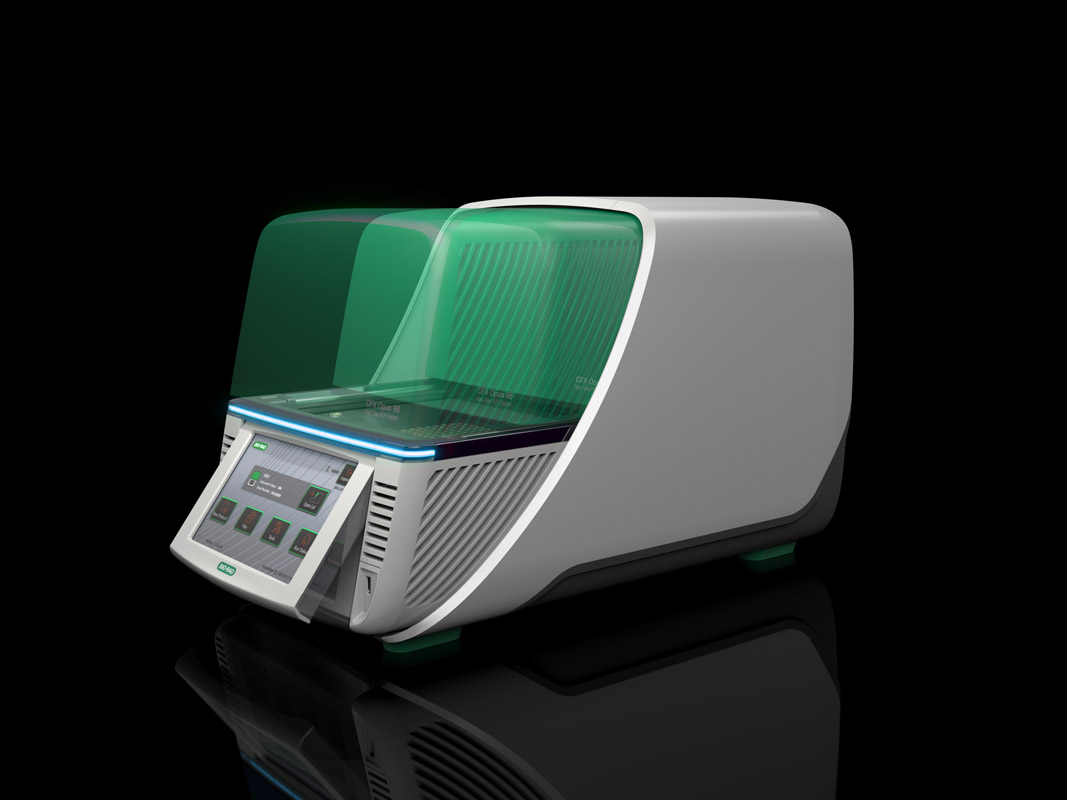Beyond the visually bold aesthetic, embedded qPCR technology and an intuitive UI, the Melbourne & Californian design teams developed unique mechanical and functional elements to deliver class leading lab workflow productivity, and consistently accurate analysis.
- A revolutionary retractable optical shuttle replaces a traditional pivoting optics head over a fixed sample compartment, improving well-plate accessibility and reducing the working envelope. These aspects and the adjustable touchscreen allows banks of instruments to be conveniently operated in space saving vertical racks.
- Patented thermal block provides precise temperature uniformity to each well of the 96 or 384 well plate; and across run-to-run and device-to-device.
CFX Opus’ design maximises capacity within laboratories where space is almost always at a premium:
- Its unique retractable optical shuttle in conjunction with the lid design allows low-height clearance to fit under low lab bench shelving or vertically stacked in multi-unit racks.
- The device’s back-set centre of mass and footing placement facilitates the CFX Opus touch screen to safely overhang on shallow benchtops.
- All common user inputs and USB port are front facing. This, combined with the front-to-rear airflow, achieves clear 3-sided access for automated set-ups or relatively close side-by-side device placement without compromising thermal performance.
For in-lab use
- Touch screen pivots for ideal input/control across a broad range of operator heights or devices mounted in vertical racks.
- The full width status light wraps around the sides allowing operators to readily scan the cycle progress from across the lab.

